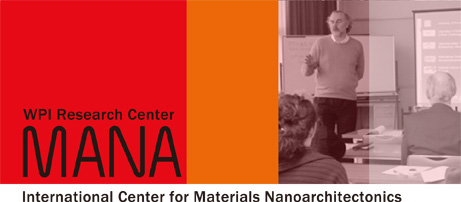Liwen Sang

- Affiliation:
- MANA, NIMS
- Specialty:
- Photoelectronics, III-Nitride semiconductors, MOCVD, light emitting diodes, photovoltaic cells
- Academic degree:
- Ph. D. Ph.D in semiconductor optoelectronics, Peking University. (2010)
Educational and Working History
| 2012 | - | Present | ICYS-MANA Researcher, MANA, NIMS. |
| 2010 Apr | - | 2012 Mar | Postdoctoral researcher, National Institute for Materials Science, Japan |
| 2005 Sep | - | 2010 Jul | Ph.D in semiconductor optoelectronics, Peking University |
| 2001 Sep | - | 2005 Jul | B.Sc. in Applied Physics, Wuhan University |
Research Interest
The direct-bandgap III-Nitride semiconductor family and its alloy span the widest spectral range among all the semiconductors, ranging from the infrared (InN at 0.65 eV) through the visible and ultra-violet (UV) (GaN at 3.42 eV) to the deep UV range (AlN at 6.2 eV). This unique property along with their superior physical and chemical characteristics provides the wide applications in the solid-state lighting, laser diodes, high-frequency and high-power electronic devices, photovoltaic cells, etc. In the III-Nitride family, In-rich InxGa1-xN devices are less developed due to the challenge to realize p-type doping even if it has promising applications in the long-wavelength emitting and ultra-high-efficiency solar cells. We will solve this worldwide puzzle of p-type doping in In-rich InxGa1-xN by intelligently designing the growth technique.
Full-color light emitting diodes (LEDs) and ultra-high efficiency solar cells
Three primary color-mixing based on one material system is the most effective way to realize white light emitting. Up to now, only blue and green LEDs can be achieved using low In content InxGa1-xN. It is impossible to generate red emitting by using InxGa1-xN. On the other hand, although a high power conversion efficiency of more than 50% was expected for InxGa1-xN multi-junction photovoltaic cells, the practical values are much smaller (<3%). In order to make breakthrough in semiconductor lighting and to achieve the highest-efficiency solar cells, the novel physical strategies and device concepts are extremely urgent to overcome these drawbacks in III-Nitride material system.
Selected Papers
- Enhanced performance of InGaN solar cell by using a super-thin AlN interlayer
- High-temperature ultraviolet detection based on InGaN Schottky photodiodes
- High-performance metal-semiconductor-metal InGaN photodetectors using CaF2 as the insulator
- Transmission electron microscopy investigation of inversion domain boundary in Al0.65Ga0.35N grown on AlN/sapphire template
- Reduction of threading dislocation densities in AlN epilayer by introducing a pulsed atomic-layer epitaxial buffer layer
- Study on Threading Dislocations Blocking Mechanism of GaN/AlxGa1-xN Superlattices
L. W. Sang, M. Liao, N. Ikeda, Y. Koide and M. Sumiya
APPLIED PHYSICS LETTERS, 99, 161109 (2011)
L. W. Sang, M. Liao, Y. Koide and M. Sumiya
APPLIED PHYSICS LETTERS, 99, 031115 (2011)
L. W. Sang, M. Liao, Y. Koide and M. Sumiya
APPLIED PHYSICS LETTERS, 98, 103502 (2011)
L. W. Sang, H. Fang, Z. X. Qin, X. Q. Wang, B. Shen, Z. J. Yang, G. Y. Zhang, X. P. Zhang, L. P. You and D. P. Yu
APPLIED PHYSICS LETTERS, 95, 112106 (2009)
L. W. Sang, Z. X. Qin, H. Fang, T. Dai, Z. J. Yang, B. Shen, and G. Y. Zhang, X. P. Zhang, J. Xu and D. P. Yu
APPLIED PHYSICS LETTERS, 93,122104 (2008)
L. W. Sang, Z. X. Qin, H. Fang, X. R. Zhou, Z. J. Yang, B. Shen and G. Y. Zhang
APPLIED PHYSICS LETTERS 92, 192112 (2008)


